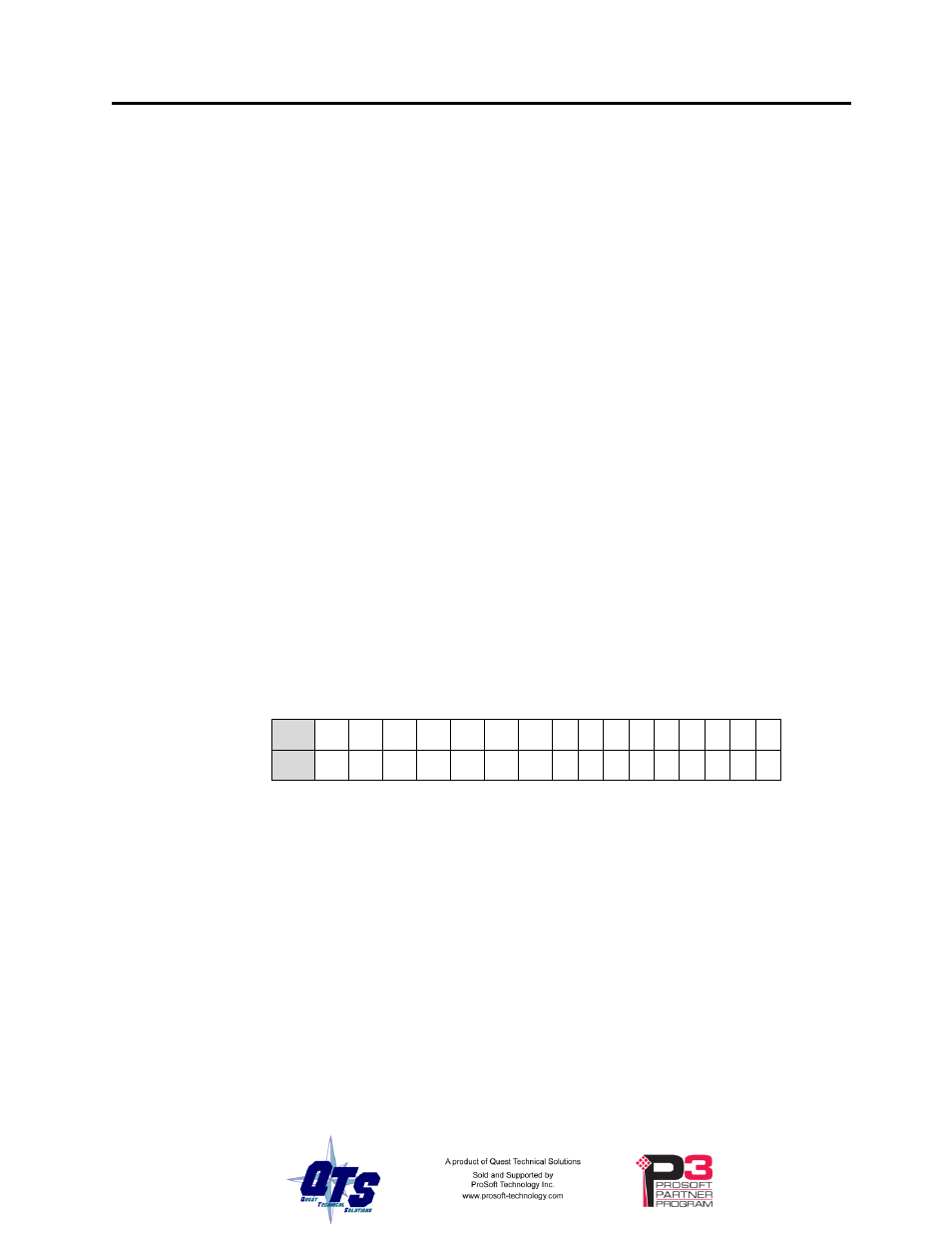Diagnostic data – ProSoft Technology CLX-PVX User Manual
Page 31

QTS-CLX-PVX Page
25
Example 1:
To convert 74.5%, first convert 74 to hexadecimal 4A and store it in the upper byte.
Multiply .5 by 256 to get 128 = 80 hex and store it in the lower byte.
The result is 4A80 hex.
Example 2:
To convert -1.75%:
Since the number is negative and the fractional part is non-zero, first add 256 to -1 to get
255 and subtract 1. Put 254 = FE hex in the upper byte.
The fractional part is .75. Subtract it from 1 to get .25, multiply by 256 to get 64 = 40
hex, and put 40 hex in the lower byte.
The result is FE40 hex.
Diagnostic Data
The QTS-CLX-PVX maintains diagnostic counters and other diagnostic status
information.
Primary and Secondary File Error Table
In both master and monitor modes, the first two words of ControlLogix input data contain
a table that shows which card files have communication problems on either the primary
or secondary bus.
The first word, at offset 0, corresponds to the primary.
The second word, at offset 1, corresponds to the secondary.
In each word, bit 0 corresponds to file 1, bit 1 corresponds to file 2, and so on.
Bit
15 14 13 12 11 10
9
8 7 6 5 4 3 2 1 0
File 16 15 14 13 12 11 10 9 8 7 6 5 4 3 2 1
The bit is set if there’s at least one card in the file with a problem on that bus.
The bits are 0 for unconfigured card files.
TIP
You can use the file error tables to determine if a particular piece of data
is valid.
If there’s a problem with the connection to the QTS-CLX-PVX module, the
ControlLogix processor sees all bits in this table as set to 1.
Integrity Bits
In master mode, PROVOX integrity bits for each configured card are mapped to
ControlLogix status inputs. Use the aliases created by ClxPvxCfg to access the integrity
bits.
